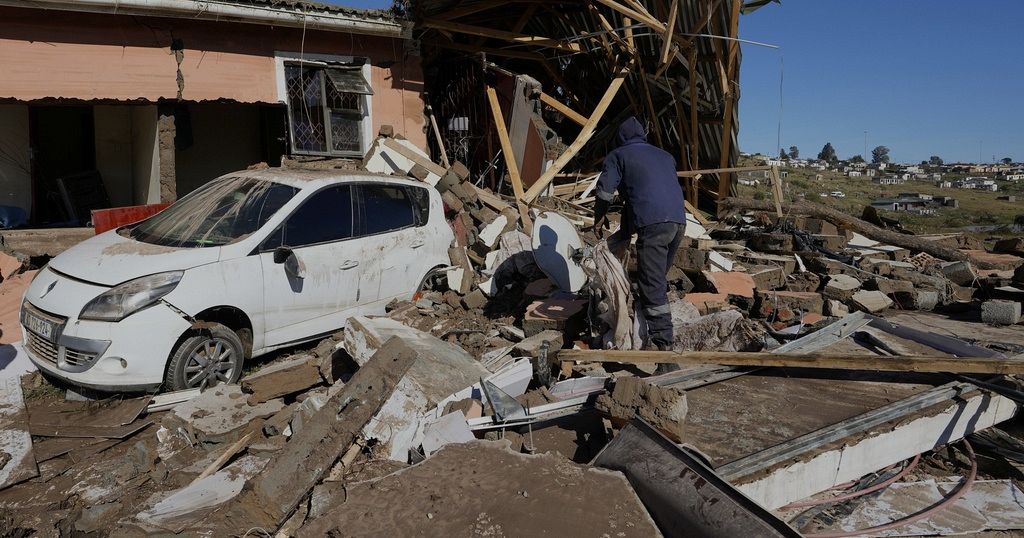Devastating floods have struck South Africa, leaving a trail of destruction and loss of life in their wake. The southeastern part of the country has been particularly hard hit, with at least 78 people confirmed dead and many more still missing. The floods, which began on Tuesday, have been described as a “real disaster” by officials, who are working tirelessly to search for survivors and provide aid to those affected.
South African President Cyril Ramaphosa visited the affected region on Friday, where he attended a briefing by officials from the National Disaster Management Centre. He also planned to visit a bridge where a school bus was washed away by flooding, resulting in the deaths of six students, the bus driver, and another adult. Four other schoolchildren are still missing.
The floods were triggered by an extreme weather front that brought heavy rain, strong winds, and even snow to parts of the province. Forecasters had warned about the extreme weather last week, but many residents were nonetheless caught off guard by the ferocity of the floods. The head of the provincial government, Eastern Cape Premier Oscar Mabuyane, said that the rescue effort was “paralysed” in the first few hours due to a lack of resources, including specialized search and rescue teams, divers, and K-9 dog units.
One of the main challenges facing rescue teams is the lack of infrastructure in the affected areas. The province has only one official rescue helicopter, which had to be brought in from another city over 500 kilometers away. Many victims were living in poor areas with informal housing, which were the worst affected by the floods.
The flooding has had a traumatic impact on residents, with many left to pick up the pieces and come to terms with what they have experienced. Zinathi Vuso, a resident of Mthatha, described the horror of watching people die in front of her. “I need psychological help because I saw people dying in front of me,” she said. “They were being dragged by the water along with the corrugated iron. Others tried to hold or climb onto something, but it would break, and they ended up dead.”
As the search for survivors continues, authorities are appealing for residents to report missing people so that rescuers can get a better idea of how many people are still unaccounted for. Cooperative Governance and Traditional Affairs Minister Velenkosini Hlabisa said that the situation is dire, with many more bodies expected to be found as the floodwater subsides. “We are in a crisis. A real disaster,” he said. “The more water subsides, the more people will be found.”
The flooding in South Africa is a stark reminder of the country’s vulnerability to extreme weather events. In 2022, more than 400 people died in flooding in and around the east coast city of Durban. As the country struggles to come to terms with the latest disaster, officials are working to provide support and aid to those affected, while also taking steps to prevent such tragedies from occurring in the future.
